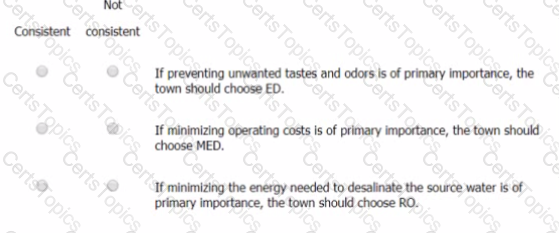Admission Tests Related Exams
GMAT Exam







For a town seeking to desalinate source water with a salinity of 12,000 mg/L. select Consistent for each of the following statements that is consistent with the information and recommendations provided, and otherwise select Not consistent.

It can be inferred from the passage that which of the following occurs when a salesperson employs the top-down sales tactic and does not occur when the bottom-up sales tactic is employed?
At a certain used-book store, the cost of each paperback book is x dollars and the cost of each hardcover book is y dollars. What is the cost of a hardcover book at the store?
(1)
At the store, the cost of 3 paperback books and 5 hardcover books is $12.25.
(2)
At the store, the cost of 9 paperback books and 15 hardcover books is $36.75.